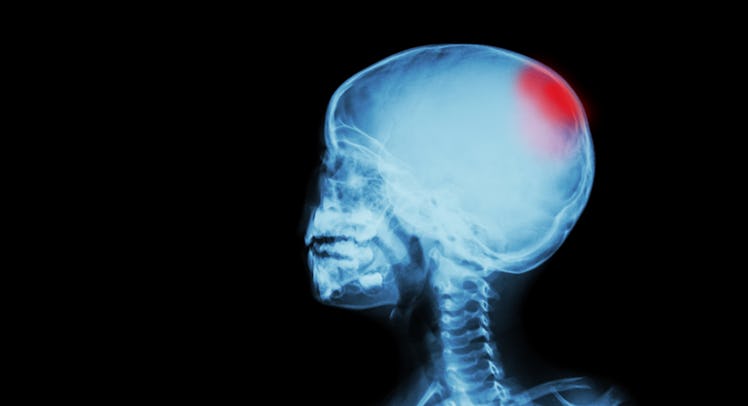5 Simple Symptoms Doctors Look For When You Drop Your Baby
Physicians break down what to look for when infants are dropped—and signs that parents might miss.

Plenty of moms and dads drop their babies. Flattering, we know. The medical consensus seems to be that infants aren’t great with gravity, according to Andrew J. Bernstein, a physician and Fellow of the American Academy of Pediatrics — based on clinical and personal experience, as a butterfingers dad.
“I would think that most parents have been involved in their babies getting clunked on the head at some point,” Bernstein says. “I’ve certainly been involved in head clunks with both of my children.”
But these falls can range to from clunk to crisis, and while the former is more common and may not necessitate more than a phone call to the pediatrician, others require immediate emergency attention. Given that brain injuries are a leading cause of death for children in developed countries, it is crucial for parents to know when they need to seek help. Here’s what doctors look for when babies are dropped, and how you can make a quick decision as to whether it’s time to grab an ice pack or time to call 9-11.
Step One: Figure Out What Happened
“We want to know exactly how the injury occurred and what the mechanism of the fall was,” Laura Hagopian, an emergency room physician who has seen her share of clunks and crises, told Fatherly. It’s especially important to tell your doctor how far your baby fell, because of the “rule of threes”: if the the fall was more than three feet and the baby is fewer than three months old, there’s higher risk.
Step Two: Are There Bruises? If So, Where?
When looking for signs of a skull fracture, doctors look for bruising — but not necessarily on the infant’s head. Instead, physicians look around the eyes and behind the ears for bruises known as Battle’s Signs. Not all bruises are created equal, Bernstein says. Other bruises aren’t fun but have “no relation to whether or not there is bleeding inside the head. Which is the real potential problem with a head injury.”
Step Three: Did They Cry Immediately After The Fall?
One of the first things Bernstein asks patients is whether the infant was knocked unconscious. However, a baby can pass out only briefly and it might be hard for parents to know for sure, which is why he asks about crying. If a baby falls and doesn’t cry immediately, that may indicate that he or she was briefly unconscious. This may require further screenings and tests, such as CT scans.
Step Four: Are There Signs of Abuse?
Having to bring your baby to the ER is torture, and having a some doctor suggest that you did it on purpose is even worse. But you should expect a few questions, because screening for child-abuse is routine, and can protect children who need it most. And if your baby was under the supervision of another family member or friend when he or she fell, abuse isn’t something you should rule out. When the doctor asks questions that screen for abuse, take them seriously and answer them carefully.
Step Five: Have There Been Any Changes In Behavior?
Seizures, multiple episodes of vomiting, and obvious unconsciousness all call for immediate trips to the hospital, but there are more subtle shifts in behavior that can be just as serious. Once the child calms down from the initial fall, parents need to pay close attention to his or her actions. If the baby is taking a bottle and acting normally, he or she is probably fine. If, however, the baby is lethargic and irritable, it may be more than a fussy day. “Infants with injuries inside the brain often don’t have symptoms — fractures or other brain injuries can occur in small babies even with minor trauma,” Hagopian says.
This article was originally published on